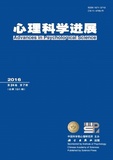The discovering of ‘intermediate effect’ in medical expertise research inspires researchers to explore the knowledge structure of medical experts. On the basis of ‘knowledge encapsulation’, medical experts’ knowledge is organized with ‘illness script’. With the accumulation of clinical experiences, medical experts acquire ample ‘illness scripts’. On diagnostic reasoning, they needn’t carefully and systematically analyze all the signs and symptoms of the patient, but activate the matching ‘illness script’ automatically and make a diagnosis. This activation, called non-analytic, is based on recognition of either an instance or a pattern. The nature of medical expertise lies in the knowledge organization of the medical expert. ‘Adaptive expertise’ represents the future direction of expertise research




